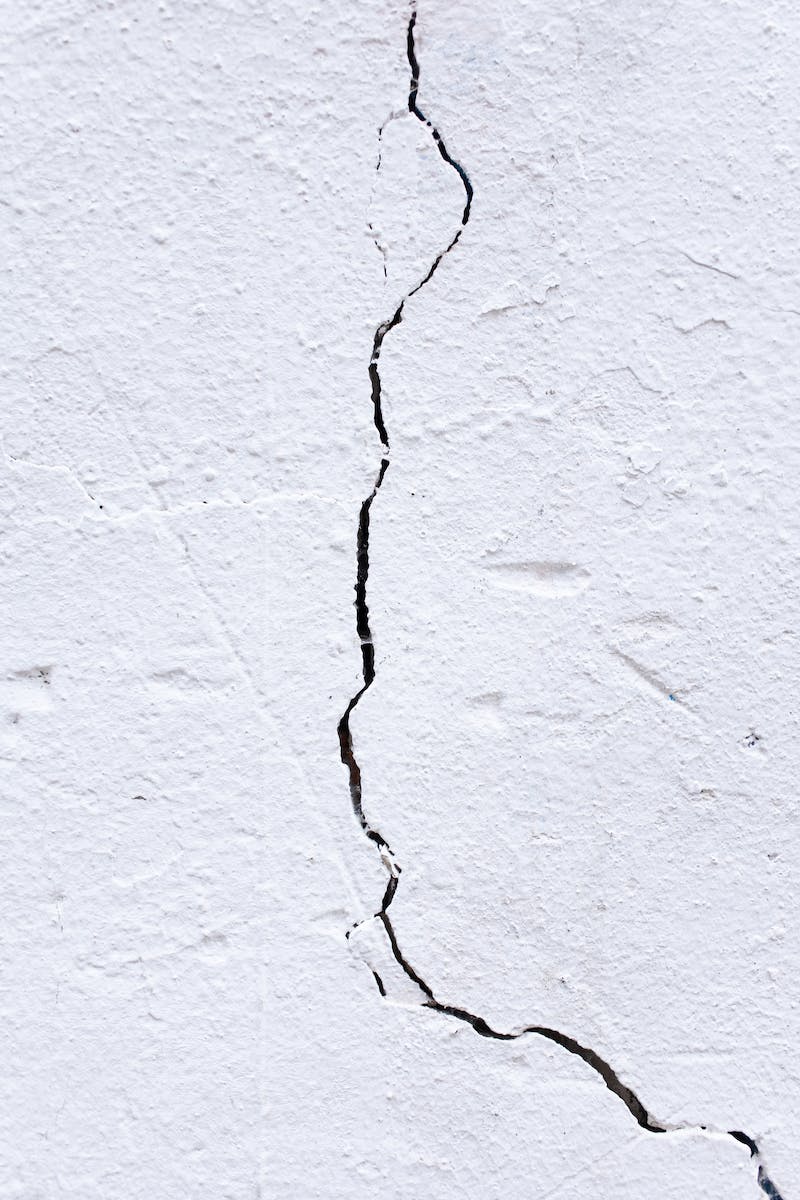Stucco Inspection Cost.
Are you wondering what the cost of a stucco inspection and testing is? Well, let us break it down for you. Most houses typically require a visual inspection, an infrared scan of the house, as well as an invasive inspection. This complete service usually falls between $495 and $1195, however, this range may increase for larger homes or commercial properties.
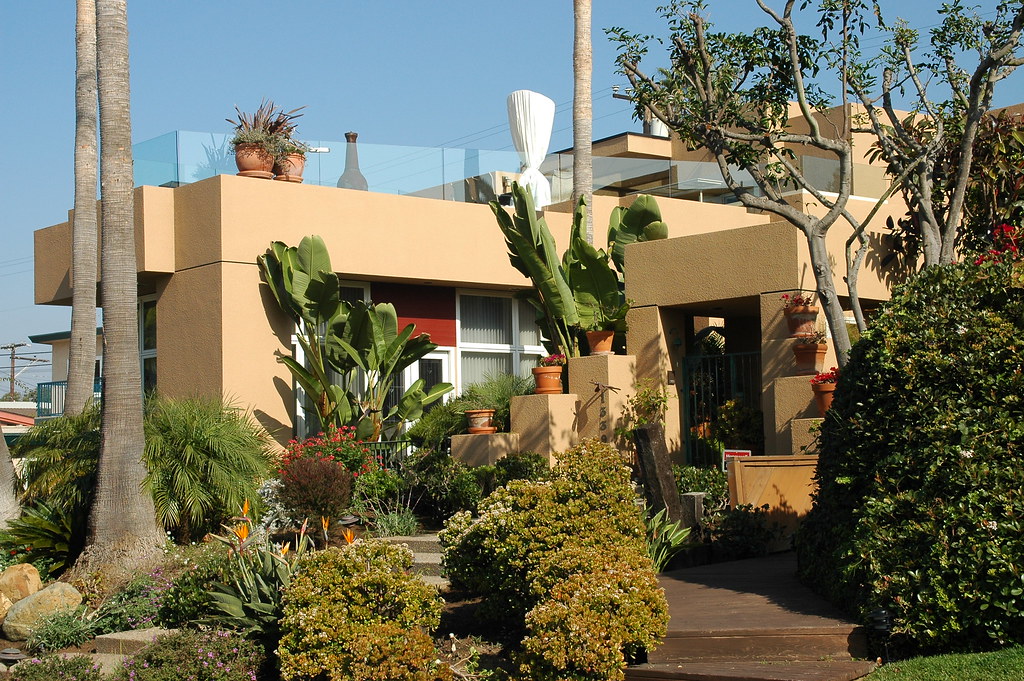
Why does stucco need to be inspected?
Stucco needs to be inspected periodically to ensure that it is performing as expected and is free of signs of deterioration. Regular inspections allow for early detection of any potential issues, allowing for timely repairs to maintain the integrity of your stucco walls.
Stucco inspections can be a costly endeavor to undertake, and the costs associated with repairs – whether they are discovered, undiscovered, or misidentified – can quickly run into the tens of thousands of dollars. Therefore, it’s important to understand that prices charged for stucco inspections should reflect the importance of accurate results.
Factors to Consider
When it comes to choosing a stucco inspector, experience is key. Look for a company that specializes in stucco inspection and don’t settle for an inspector who only watched a few online videos and then got certified. Additionally, stay away from inspectors who offer both inspection and repair services, as they may be tempted to recommend unnecessary work.
The Risk of Errors
Inspecting stucco systems accurately takes time and expertise. That’s why it’s worth investing in an experienced inspector, as their capabilities will reduce the risks of making a $50,000 mistake. Don’t let an inexperienced inspector’s oversight become your problem once you own the home; opt for a second opinion if you feel it necessary.
Why do you need a stucco inspector?
Stucco repairs can become very costly if left unaddressed. In some cases, such repairs might cost over $100,000 – and that’s why it’s so important to have a well-informed inspector evaluate your property.
Inspectors who lack adequate experience may fail to go beyond raw meter readings when assessing the property. Without follow-up sampling, this can lead to unnecessary repairs or replacements being carried out on a structure. At Stucco Safe, we perform core sampling to ensure rot is present before recommending any major works. This additional step can help you save huge amounts of money on repair costs.
Ultimately, an experienced and informed stucco inspector is the best way to protect your investment and guarantee you’re getting the most out of it. A solid inspection should save you time and money in the long run – so make sure you look for one you trust!
Watch Out for Non-OSB Substrates
OSB (Oriented Strand Board) substrates are a form of engineered wood used in many building projects. While OSB is the most common and provides the necessary structural resistance, other materials can also be behind your stucco including:
- Celotex
- Polyisocyanurate
- Medium Density Fiberboard
- Homasote
- Extruded Polystyrene
Although these may appear satisfactory from the outside, they do not provide the same structural resistance as OSB. As such, stucco inspectors must obtain a core sample to properly identify what lies behind the stucco system. Without this vital step, a false positive inspection is possible – putting the integrity of the building at risk. Therefore, experienced stucco inspectors should always take the time to examine the full scope of the application to ensure accuracy and reliability.
What Factors Into the Cost of a Stucco Inspection?
Experienced stucco inspectors are well-equipped with the necessary tools and expertise to locate any potential issues that may arise, from hairline cracks to moisture damage. As such, investing in a thorough stucco inspection will allow you to identify problems before they escalate, ultimately saving you time and money in repair costs. With their skill and knowledge, our certified stucco inspectors will provide you with peace of mind by protecting the structural integrity of your home’s exterior.
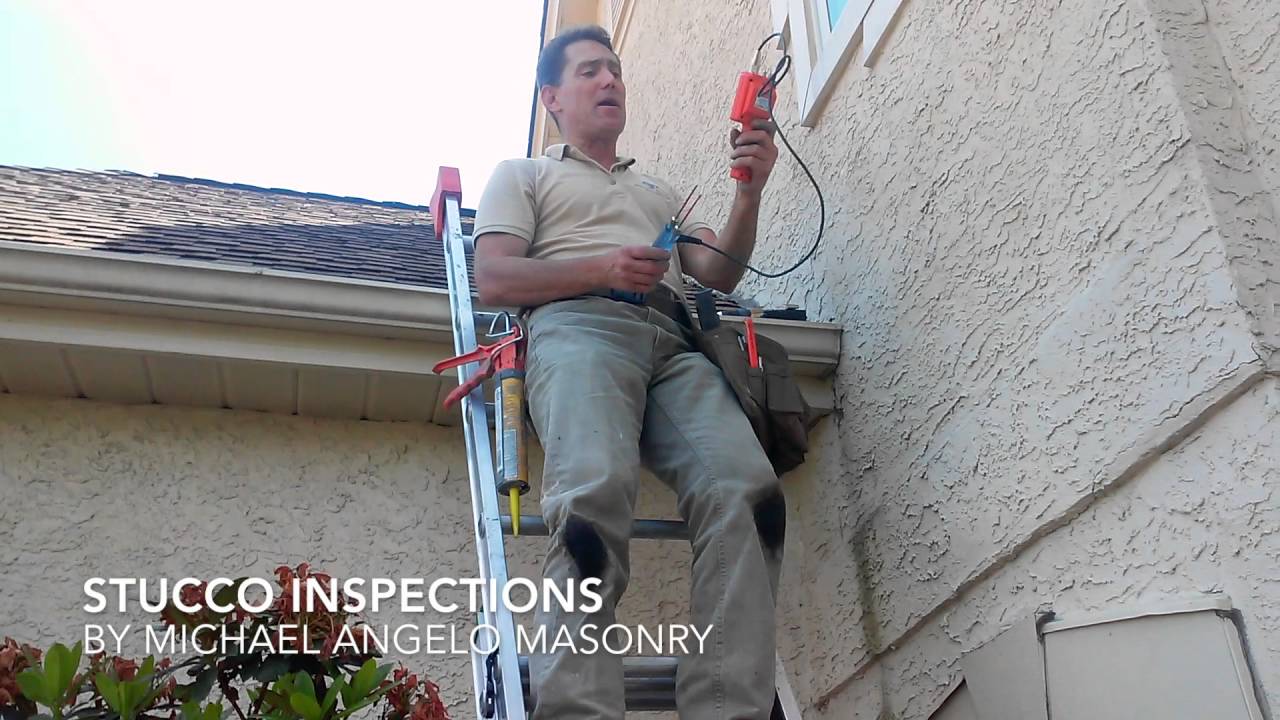
The cost of a professional stucco inspection varies and is primarily influenced by several key factors:
Square Footage
One of the primary determinants of stucco inspection cost is the size of your property. Larger properties require more effort and resources to inspect thoroughly, resulting in higher costs. It is essential to be informed about this before considering stucco inspection services, as you will be able to make an accurate assessment of how much you should expect to pay.
Invasive Moisture Probe Sites
Accurately inspecting a stucco wall for hidden moisture damage requires the use of invasive moisture probe sites. By identifying these sites, inspectors can assess the condition of the stucco walls and detect any signs of damage caused by excessive moisture levels. While such measures can be costly due to the number of probe sites that need to be identified, they are critical for obtaining accurate results and ensuring the integrity of the structure.
Core Samples
To accurately diagnose the issues lingering beneath the stucco, core samples may need to be taken. This type of inspection is more intensive than a regular inspection and necessitates specialized knowledge and additional time, resulting in increased costs. However, this process offers the advantage of providing detailed information on the extent to which the stucco has been affected by underlying problems.
Experience of the Stucco Inspector
During a professional stucco inspection, certified inspectors will perform a visual inspection of your stucco, checking for signs of damage and areas with potential moisture problems. In some cases, core samples may be taken to get a better look at the underlying layers. Once the inspection is completed, you’ll receive a detailed report outlining any repairs that may be necessary. Don’t risk your investment by hiring an inexperienced inspector.
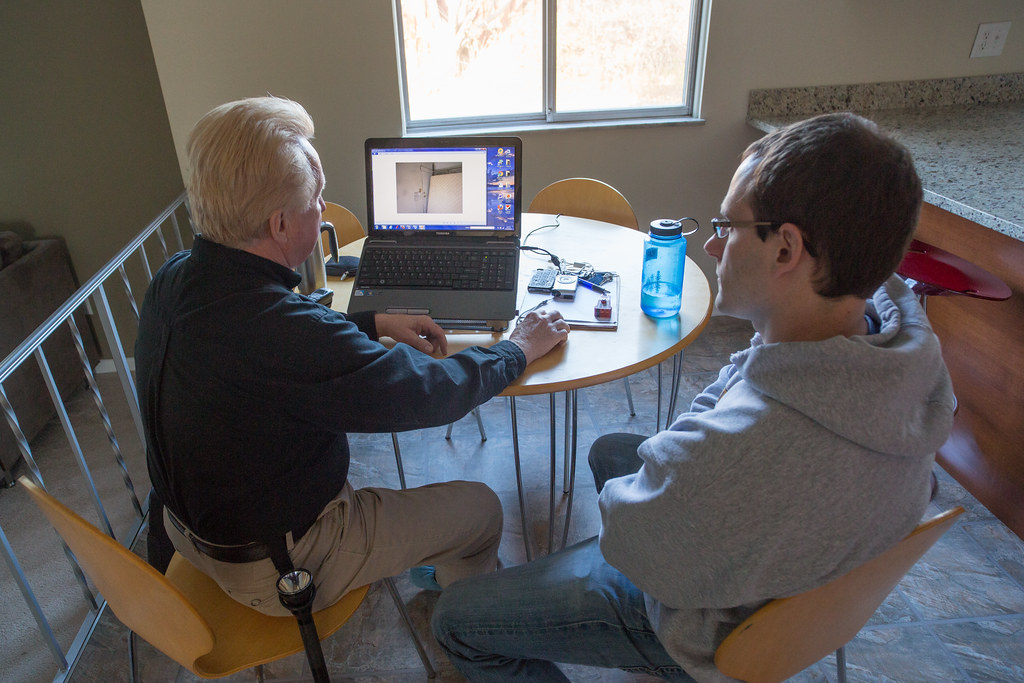
Stucco Inspection Is Very Inexpensive Compared To Repairs
While the cost of a stucco inspection may seem substantial upfront, it’s essential to view it as a worthwhile investment. Identifying and repairing minor issues like hairline cracks and small holes can prevent more significant, costly damage down the line.
What’s involved in a stucco inspection?
When performing a Stucco Inspection, the inspector will take a series of measurements to determine if the stucco cladding system is properly managing moisture. It involves the following steps:
1. Visual Inspection of the Stucco System
In this step, the inspector looks for obvious defects. They also look for missing components and flashings that can lead to issues behind the stucco.
2. Infrared Scan of the Stucco
The Infrared images can lead us to potential locations that have moisture accumulations. These will show up as color variations on the inspector’s screen. They will add these locations to the invasive plan when detected.
3. Invasive Moisture Test
In this step, the inspector drills small holes (1/4″) and inserts a moisture meter. The meter will display a moisture reading. When normal moisture is detected they seal the holes and move on. Higher moisture levels can lead to further investigation.
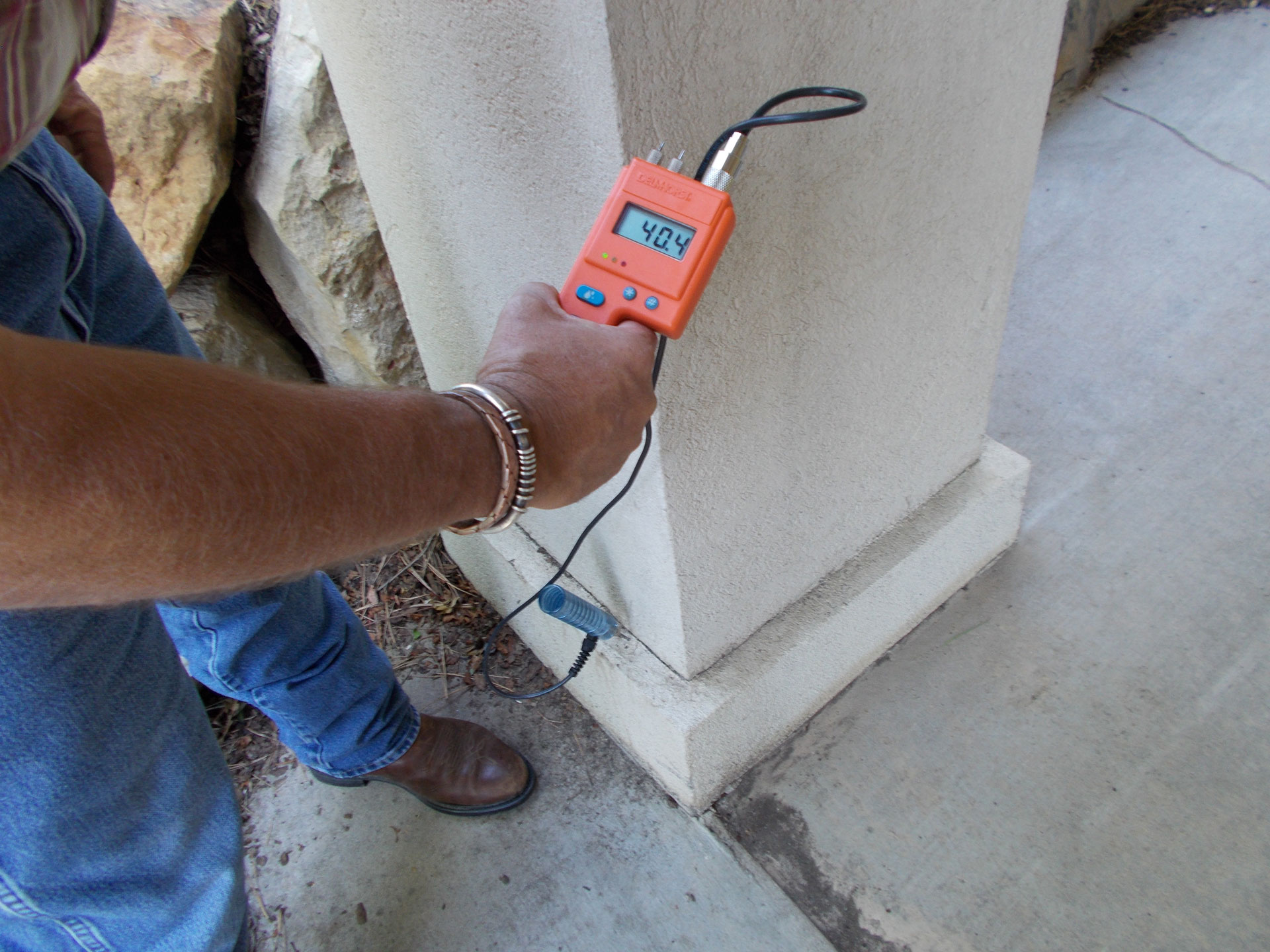
4. Core Sampling
A core sample is a hole about the size of a quarter. The core allows the inspector to view the substrate and either confirm that there is wet wood, or that a different condition exists. Other conditions that can exist are generally non-wood-based substrate types such as:
- polyisocyanurate
- extruded polystyrene
- Celotex
- or Thermoply
Different substrate types can trigger inaccurate moisture meter readings, so it’s important to identify the material behind the stucco.
5. Holes Resealed
The inspector will inject all of their penetrations into the stucco system with a waterproof sealant. After taking core samples, they will return the core to its original location. Most times, the test locations are not visible once the sealant dries because they will match the color of your stucco.
6. Your Thorough Report is Produced
A stucco inspection report is an important document for any homeowner whose property utilizes this popular wall covering. It provides an in-depth assessment of the existing stucco system, identifying areas of wear and tear as well as noting any potential signs of damage or degradation.
The report typically begins with a visual inspection of the stucco, noting its overall condition, color uniformity, and texture. It then moves on to test the moisture content within the material and check for any cracks, chipping, crumbling, staining, or other signs of distress.
The report may also include recommendations for repair or replacement if necessary. Overall, a stucco inspection report is a detailed record of the state of your stucco system, providing crucial insights that can be helpful for both current and prospective owners.
FAQs on Stucco Inspections
How do you test for stucco?
Testing for stucco involves visually inspecting the stucco façade and tapping on the surface to identify any hollow spots or soft spots, which could indicate a void behind the stucco where water may have penetrated. Additionally, moisture meters can be used to detect humidity levels in the wall, as well as infrared imagers to detect temperature differences between various sections of the wall.
How accurate are stucco inspections?
Stucco inspections are quite accurate if performed by an experienced professional. As long as all visible areas of the wall are closely examined, a thorough inspection can accurately identify potential problems.
What does failing stucco look like?
Failing stucco usually has visible signs of deterioration such as cracking, flaking, discoloration, efflorescence, or bubbling of the paint. Any of these signs could indicate underlying issues that require further investigation.
What is the life expectancy of stucco?
The average life expectancy of stucco is anywhere from 25-50 years depending on environmental conditions and maintenance.
When should I worry about stucco cracks?
Typically, stucco cracks that measure less than 1/8” in width are considered acceptable. Anything wider than this could indicate a more serious issue and should be investigated by a professional.
What year was stucco bad?
There is no specific “year” when stucco was bad. However, some studies have shown that older stucco homes (built before 2003) may be at higher risk for developing deterioration due to improper installation and poor maintenance practices.
Does homeowners insurance cover stucco cracks?
Generally speaking, homeowners insurance does not cover damage from normal wear and tear, such as stucco cracks, so it is important to regularly inspect your stucco façade for any signs of damage.
What are acceptable stucco cracks?
Smaller cracks measuring less than 1/8” in width are considered acceptable, though any cracks should be monitored closely for potential expansion over time. If there is any doubt, contact a professional for further inspection.

